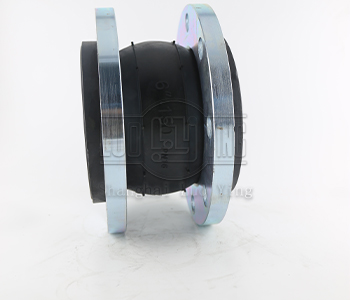What is the role of rubber joint soft connection?
Oct-23-07
What is the role of rubber joint soft connection?The rubber joint soft connection plays a crucial role in various industries and applications where flexible connections are required in piping systems. This article will discuss the role and importance of a rubber joint soft connection in practical applications.
A rubber joint soft connection, also known as a rubber expansion joint, is a flexible connector that allows for movement, absorption of vibrations, and compensation for misalignment or thermal expansion in piping systems. Here are some of the key roles it plays:
Absorbing Vibrations: Piping systems often experience vibrations caused by pumps, compressors, or other equipment. These vibrations can lead to fatigue and stress on the pipes, increasing the risk of damage or failure. The rubber joint soft connection acts as a shock absorber, effectively dampening vibrations and reducing the transfer of these vibrations to the rest of the system. This helps to protect the pipes and equipment, extending their lifespan.
Compensating for Thermal Expansion: Temperature changes in piping systems can cause the pipes to expand or contract. Without a flexible joint, this thermal expansion can create stress and strain on the pipes, resulting in leaks, cracks, or structural damage. The rubber joint soft connection accommodates these thermal movements by allowing the pipes to expand or contract without putting undue stress on the system. It helps maintain the integrity of the piping system and prevents potential issues caused by thermal expansion and contraction.
Allowing for Misalignment: Piping systems may experience slight misalignments during installation or due to ground shifts or settlement. The rubber joint soft connection can compensate for these misalignments by providing flexibility and allowing the pipes to move within a certain range. This flexibility helps to minimize stress on the joints and prolong the lifespan of the piping system. It also simplifies the installation process by accommodating minor misalignments without the need for costly modifications or adjustments.

Preventing Galvanic Corrosion: Galvanic corrosion occurs when two dissimilar metals come into contact in the presence of an electrolyte, such as water. The rubber joint soft connection helps prevent galvanic corrosion by isolating different pipe materials from direct contact. The rubber lining acts as a barrier, preventing the flow of electrical currents and the subsequent corrosion that can occur between dissimilar metals. This helps to extend the lifespan of the piping system and reduce the need for repairs or replacements.
In conclusion, the rubber joint soft connection plays a vital role in piping systems by providing flexibility, absorbing vibrations, compensating for thermal expansion, allowing for misalignment, reducing noise and vibration transmission, and preventing galvanic corrosion. Its ability to accommodate movement and provide a flexible connection helps to maintain the integrity, efficiency, and longevity of the piping system in various industries and applications.

